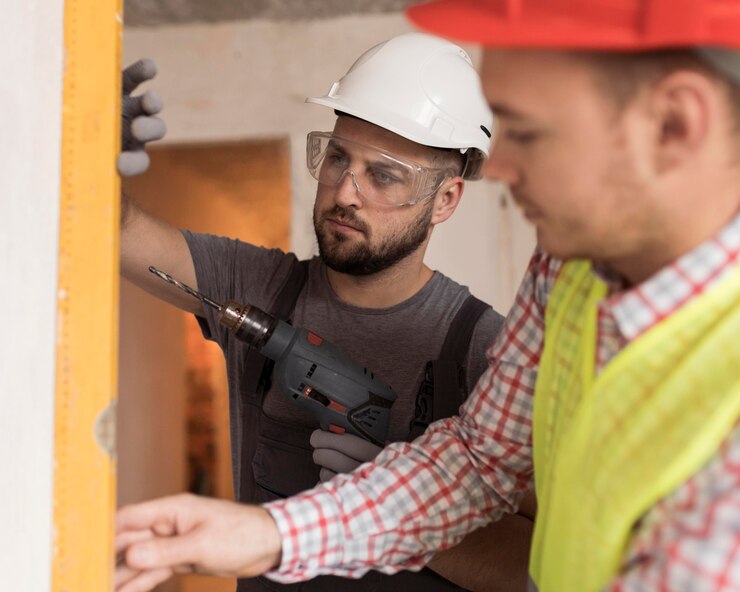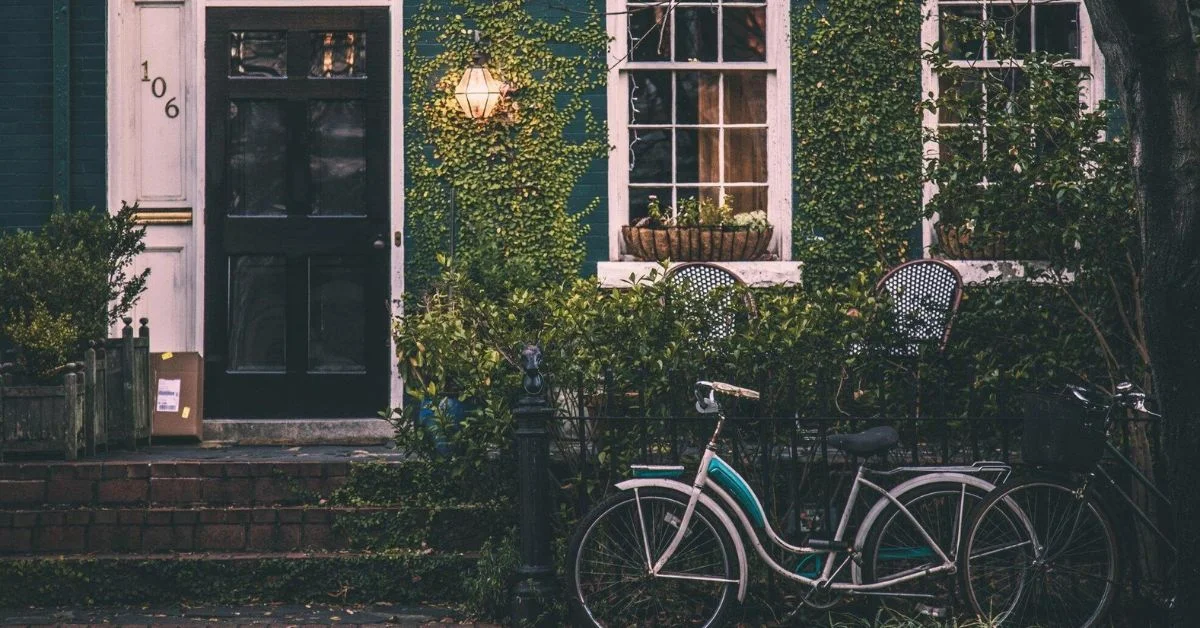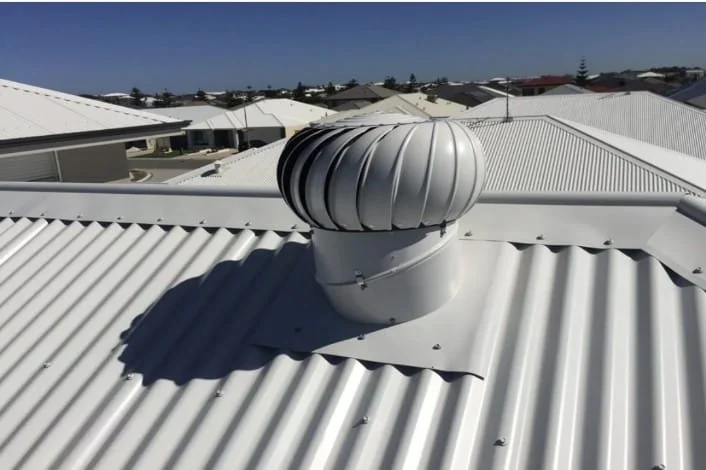HOME IMPROVEMENT
When to Contact a Siding Contractor: Timing Your Home Improvement

Are you wondering when to consider hiring siding contractors in Vancouver? Your home’s exterior is its first line of defense against the elements, and siding plays a critical role in protecting and enhancing your property. Knowing when to contact a siding contractor is essential for maintaining your home’s integrity and aesthetics. We will explore various scenarios and indicators that suggest it’s time to contact a professional siding contractor to ensure your home remains in top condition and continues to provide comfort and safety.
Visual Signs of Siding Wear and Damage
One of the most obvious reasons to contact a siding contractor is the presence of visible wear and damage. This can include cracked, warped, or rotted siding panels, which detract from your home’s appearance and compromise its structural integrity. Other signs, such as fading color and mold or mildew growth, indicate that the siding’s ability to protect the home is diminishing. Homeowners should conduct regular visual inspections of their siding and consider contacting a contractor if they notice any of these issues, as early intervention can prevent more extensive and costly repairs.
After Severe Weather Events
Severe weather can severely impact the condition of your home’s siding. It is prudent to check the exterior thoroughly after events such as heavy storms, hail, or high winds. Any storm damage, such as dents, cracks, or torn-off pieces, should be addressed promptly. Contacting a siding contractor for an inspection after such events can help ensure that all damage is professionally assessed and remedied, protecting your home from future weather-related vulnerabilities.
Energy Efficiency Concerns
If you notice a sudden increase in your heating or cooling bills, it could be due to inefficiencies caused by your home’s siding. Older or poorly installed siding can allow air to leak in and out of your home, leading to increased energy use and higher utility bills. A siding contractor can assess if your siding is the cause of these issues and recommend solutions such as repair or replacement with more energy-efficient materials, ultimately helping to reduce your energy costs and improve the comfort of your home.
Preparing for Home Sale
For homeowners considering selling their property, contacting a siding contractor can be a wise move. New siding can significantly enhance curb appeal, potentially increasing the market value of your home and making it more attractive to prospective buyers. A siding upgrade can offer a fresh, appealing look and convey to buyers that the home has been well-maintained, accelerating the sale process and possibly resulting in a higher selling price.
Outdated or Undesirable Siding
Trends in home design can change over the years, and what was once fashionable may now appear dated. If your home’s siding is from a bygone era or doesn’t align with your current aesthetic preferences, it might be time to contact a siding contractor. Updating your siding can transform your home’s appearance and increase your satisfaction with your living space. Furthermore, new materials and technologies might offer better durability and maintenance benefits than what was available when your current siding was installed.
Regular Maintenance Check-Up
Even if your siding isn’t showing obvious signs of damage, regular check-ups by a professional can be crucial for long-term maintenance. A siding contractor can offer expert insights into the condition of your siding and perform preventative maintenance tasks. These check-ups can help extend the life of your siding by addressing minor issues before they become major problems, ensuring continuous protection for your home.
Compliance with Local Building Codes
Local building codes can dictate when to contact a siding contractor is necessary. These regulations often change, and keeping up with current standards is essential for legal compliance and safety. If your home’s siding doesn’t meet these requirements due to age or the materials used, a siding contractor can help you navigate these legal landscapes. Upgrading to compliant materials ensures your home’s safety and legal standing. It can also prevent potential fines or complications if you plan to renovate or sell your home in the future. Regular consultations with a professional can keep you informed and compliant with local building codes.
Determining the right time to contact a siding contractor involves observing your home’s exterior for signs of damage, considering energy efficiency issues, and assessing aesthetic desires. Whether you’re dealing with the aftermath of severe weather, preparing to sell your home, or simply aiming to maintain its condition, professional guidance from a siding contractor can be invaluable. By staying proactive about the condition of your siding, you can maintain your home’s beauty, efficiency, and structural integrity, safeguarding your investment for years to come.
HOME IMPROVEMENT
4 Essential Steps to Restoring a Smoke-Damaged Small Old House

Restoring a smoke-damaged small old house can be an overwhelming task. Whether it’s after a small fire or years of built-up smoke exposure, the unpleasant odor and residue can affect every corner of your cherished home.
Here’s a guide to help you through the restoration process so that you can breathe fresh air into your space and preserve its historical charm.
1. Assess the Damage and Plan
Before you begin any work, it’s crucial to assess the extent of the smoke damage. This means checking for any structural damage that may have occurred and determining the areas most affected by soot and odor.
You may want to consider bringing in a professional fire damage restoration service, especially if the smoke damage is extensive, to ensure that the assessment is thorough and that you have a clear understanding of what needs to be done
2. Ventilate and Prepare the Area
Open all your windows and doors. This helps get fresh air in and smoke smells out. If you have fans, turn them on and point them towards the doors or windows. This makes the bad air leave faster. Remember to wear masks and gloves because cleaning up smoke is dirty and might make you cough or sneeze.
Cover things you don’t want to get dirty with plastic sheets. For more help on cleaning up after smoke damage, check out https://www.rainfirerestoration.com. They have lots of tips and can do the hard work for you.
3. Clean Surfaces and Building Materials
After airing out your house, it’s time to clean everything. Use a soft cloth or sponge with warm soapy water to wipe walls, ceilings, and floors. Wood, like on doors and furniture, needs special care. Use a wood cleaner to help them look nice again. Don’t forget your windows; glass cleaner makes them shine.
If you have bricks or stone parts, scrub them with a brush and rinse with water. For soft things like curtains and sofas, you might need to wash them or use a spray to get rid of the smoke smell. It’s a big job, but cleaning helps your house feel like a home again.
4. Deep Clean or Replace Soft Furnishings
Sometimes, soft things like couches, rugs, and curtains can keep bad smells. If they smell like smoke, you need to clean them a lot or maybe get new ones. To make them smell better, you can clean them with special soap. But if the smell is still there after you clean them, you might need to buy new ones.
This helps your home smell nice and fresh. Remember, making your home restoration nice again is a big job, but it is very important. New or clean soft things can make your home feel cozy and look pretty too.
Learn All About the Small Old House
Fixing up a small old house that smells like smoke is a big job, but it’s doable! First, figure out how bad the damage is. Then, get fresh air in there and start cleaning everything from walls to carpets.
Sometimes, you might need to paint again or get new stuff if the smell sticks around. And don’t forget to keep the air clean with special machines. It might take a bit, but soon your old house will feel fresh and cozy again.
Did you find this article helpful? Check out the rest of our blog.
HOME IMPROVEMENT
Holiday Home Scent to Make Your Home Feel Festive All Year Long

Creating a festive atmosphere isn’t for the holidays. How can you keep that feeling all year? Introducing holiday home scent can transform your space.
These fragrances bring warmth and cheer, regardless of the season. Home fragrance systems play a crucial role in this transformation. They disperse your chosen scent evenly, enveloping each room.
Whether it’s the fresh aroma of pine or the inviting scent of cinnamon, the right fragrance makes a difference. Make every day feel special with the perfect home scent.
The Power of Scented Candles
Scented candles are a classic choice for bringing holiday scents into your home. They come in a variety of sizes, shapes, and scents to suit your preferences. You can opt for traditional jar candles or get creative with unique designs like floating candles or pillar candles.
These delightful additions fill the air with a cozy aroma and add a warm and welcoming ambiance to any room. You can place them on your mantel, dining table, or coffee table for an instant festive touch. And the best part? Scented candles can be used all year round, not during the holiday season.
Reed Diffusers for a Subtle Touch
For those who prefer a more subtle approach, reed diffusers are the perfect choice. These decorative bottles come with long sticks that absorb and disperse fragrance oils into the air. A gentle and consistent aroma that can last for weeks.
Reed diffusers also make for stylish decor pieces, adding a touch of elegance to any room. You can find them in a variety of designs and scents to match your home’s aesthetic. They require minimal maintenance.
Essential Oils for Customized Scents
If you desire complete control over your home’s fragrance, using recommended essential oils is the best approach. These concentrated oils are derived from natural sources and can be used in a variety of ways to create your custom scent.
You can mix and match different oils to create a unique blend that suits your taste and mood. For a warm and cozy feel, try blending cinnamon, orange, and vanilla essential oils. For a refreshing vibe, combine eucalyptus, peppermint, and lemon.
The possibilities are endless! Essential oils have various health benefits and can be used for aromatherapy. And if you’re in the mood to explore sophisticated, ready-made scents, you can purchase Santal perfume here, offering an effortlessly chic addition to your aromatic repertoire.
Aroma Machines for Whole Home Scenting
For a more efficient way to spread scent throughout the home, aroma machines are the solution. These devices use advanced technology to distribute fragrance evenly and consistently in all your rooms. They come with customizable settings so you can choose the intensity and timing of the scent diffusion.
Aroma machines are perfect for larger homes or for those who want a hassle-free way to keep their space smelling amazing all year round. They also come in various designs to fit seamlessly into your home decor.
Make Your Home Feel Festive With Home Scent
Integrating a holiday home scent creates a festive ambiance all year. Scent diffusers, like reed sticks, offer a simple, elegant solution. Candles and aroma machines add warmth and continuity.
Essential oils allow for personalized home fragrances. These methods transform any space into a haven.
The right home scent elevates mood and enhances the decor. Choose your fragrance carefully to capture the essence of the holidays every day.
Did you find this article helpful? If so, check out the rest of our site for more informative content.
HOME IMPROVEMENT
An Overview of Roof Ventilation Systems

You cannot exaggerate the critical role that roof ventilation plays in ensuring your home’s integrity and comfort. Its design promotes fresh air circulation through the attic or the space beneath. This strategic airflow regulation helps moderate indoor temperatures and protects against potential structural damage to your dwelling.
Read on to explore the essentials, importance, types, and benefits of roof ventilation systems.
Why Roof Ventilation Matters
Imagine your home when it’s hot outside. Without adequately ventilating it, the heat will accumulate in your attic, causing the mercury gauge inside your house to shoot up. Consequently, it forces your AC to work overtime. The same thing happens in winter, where you may encounter ice damming, where ice solidifies at the rooftop’s edge and obstructs water drainage. This occurrence could potentially result in leaks and subsequent damage.
A well-designed system moderates temperature extremes and prevents moisture accumulation by facilitating continuous airflow.
Critical Components of Roof Ventilation Systems
Roof ventilation systems comprise two main parts. You typically place intake vents along the roof’s lowest edge, allowing cool air to enter the attic or loft space. This inflow pushes the hot, moist air upwards and out through the exhaust vents (located at or near the peak), creating a natural flow that helps to control temperature and moisture levels.
Types of Ventilation Systems
- Ridge Vents: These run along the roof’s peak, offering a streamlined way to allow heated, humid air to escape. Many people combine them with soffit vents installed in the eaves to ensure continuous airflow.
- Turbine Vents: This type spins with the breeze to actively pull hot air out of the attic. They’re efficient but depend on the wind to function effectively.
- Static Vents: Also known as box vents, these have no moving parts. They are positioned near the roof’s ridge, allowing warm air to escape naturally, though multiple units may be necessary for proper ventilation.
- Gable Vents: These are installed at the ends of a house. They allow air movement, coming in one side of the attic and out the other. They work best when complemented by additional vent types for optimal airflow.
- Powered Vents: These are very effective and use electric or solar-powered fans to expel the hot air.
Selecting the Right Ventilation System
Choosing the appropriate ventilation system hinges on several factors, including:
- The design of your home
- Your local climate
- Specific roofing materials
Typically, a balanced approach incorporating both intake and exhaust vents proves most effective in achieving uniform temperature control and moisture regulation. Consulting roofing professionals to assess your home’s unique ventilation needs is advisable. They can recommend an optimal strategy tailored for you.
Benefits of Effective Roof Ventilation
Properly ventilating your roof confers significant advantages beyond the enhancement of home comfort. These include:
- Extending your roof’s life, thus preventing the buildup of heat and dampness, which can warp your roof decking and degrade shingles over time.
- Moderating attic temperatures, which reduces the strain on your air conditioning system. This approach potentially decreases energy bills and is one way to enhance the energy efficiency of your property.
- Adequate ventilation mitigates the risk of condensation and ice dams, preventing potential occurrences. It also safeguards against mould and rot.
Conclusion
Sufficient roof ventilation is a crucial yet frequently overlooked part of residential upkeep. It protects your home’s structure and bolsters energy efficiency. Therefore, investing in an appropriate roof ventilation system is not just advisable but economically prudent. Consulting a professional is essential to ensure your roof ventilation aligns with your specific needs. This expert guidance will assist you in navigating through the various options available to you.

 TECHNOLOGY4 months ago
TECHNOLOGY4 months agoBlog Arcy Art: Where Architecture Meets Art

 ENTERTAINMENT6 days ago
ENTERTAINMENT6 days agoExploring the Kristen Archives: A Treasure Trove of Erotica and More

 ENTERTAINMENT2 days ago
ENTERTAINMENT2 days agoKiss KH: The Streaming Platform Redefining Digital Engagement and Cultural Currents

 LIFESTYLE4 months ago
LIFESTYLE4 months agoThe Disciplinary Wives Club: Spanking for Love, Not Punishment

 LIFESTYLE6 days ago
LIFESTYLE6 days agoWho Is Sandra Orlow?

 EDUCATION3 days ago
EDUCATION3 days agoLingrohub Platform: A Complete Student Access Guide

 ENTERTAINMENT3 weeks ago
ENTERTAINMENT3 weeks agoMonkeyGG2: Your Personal Gaming Hub

 TECHNOLOGY2 days ago
TECHNOLOGY2 days agoCasibom: The Digital Alchemy Reshaping Systems, Society, and Self










